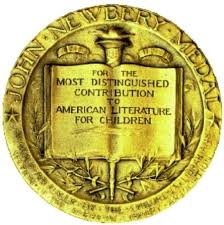Today I'm looking at two picture book biographies about a man and a bear.
No, there's not one about a man and one about a bear - both man and bear are in each book.
Both books came out in 2015.
But each book is presented very differently.
Book number One (
Winnie, the True Story of the Bear Who Inspired Winnie-the-Pooh by Sally M. Walker. Illustrated by Jonathan D. Voss. NY: Henry Holt & Company) is a straight biography - of man and bear.
Harry Colebourn was a veterinarian who loved animals. As such, he enlisted in his country's armed forces during World War I. As his troop train paused at the White River train station on August 24, 1914, he saw an old trapper trying to sell a young bear. Harry bought it, raised it in his army camp and sold it to the London Zoo when his troop joined the British forces there. Since the bear had been raised around so many humans, he was very gentle and the Zoo allowed the local children to play with him. You can guess what happened next - Christopher Robin was one of those children. He visited Winnie so often that his father was inspired to write stories about him - Stories loved by children even today known as
Winnie-the-Pooh.
Since Harry Colebourn is Canadian, the editors made no attempt to change the Britishisms to Americanisms. For example, when the author describes Winnie (the bear)'s life in Harry's military training camp, she says that the bear loved to pull hidden biscuits from Harry's pockets with his claws. I'm guessing that either the editor didn't know that cookies are called 'biscuits' in Great Britain and its Commonwealth nations, or else the editor simply decided to keep the foreign flavor of the book. There is no footnote explaining this to children (and adults) in the U.S.A.
Although the story is illustrated with ink drawings colored with watercolor, the publisher also included copies of photographs of Winnie and Christopher Robin. (unfortunately some are covered by the endpapers. The library copy I have has torn endpapers where readers have wished to peek at them.

The second book (
Finding Winnie, the True Story of the World's Most Famous Bear by Lindsay Mattick, illustrated by Sophie Blackall) is presented as a story told to the author's child, Cole - who was named after Harry Colebourn, his great-great grandfather. This is a more lyrical telling, but doesn't cover some of the points shown in the other book. Making the tale more of a conversation (similar to the style of
Winnie-the-Pooh where Christopher Robin interrupts the story), Mattick also includes what seems to be comments by Cole as a child. (They may or may not be actual quotes.)
Mattick has often told this story on radio and in speeches on this continent and in the United Kingdom, so it's no wonder that it flows so nicely.
The book is divided into three parts. 1) The story of the bear. 2) The story of Christopher Robin and the Winnie-the-Pooh books. And 3) a photograph album which includes the same pictures used in the book above, plus others. This part is presented as if it were a photograph album with a beautifully decorated cover. and the typewritten captions are brown-edged, looking aged as if some of these captions were actually in a real photograph album.
These illustrations also seem to be ink and watercolor - but there seems to be something else going on here. Charcoal? Something. If you know, please add the information in the comments below. Whatever - they do seem to be heads and shoulders above the illustrations in the Walker book.
The first book does have a bibliography, but the second does not.
An excellent review of both books can be found at
Elizabeth Bird's blog, Fuse #8 Production, here.










